Mastitis vs Thrush: How to Spot the Difference
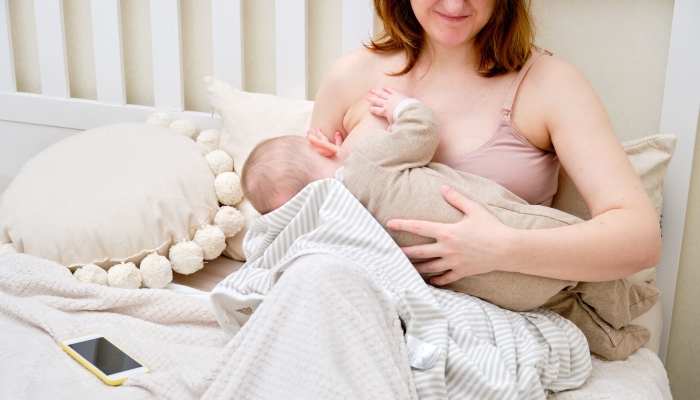
- Mastitis and thrush are both conditions common in breastfeeding moms.
- Mastitis is inflammation caused by a plugged milk duct that can get infected.
- Thrush is a yeast infection that can pass to your baby and requires antifungal medicine.
- You can protect your baby by watching for signs of thrush or mastitis and seeking treatment.
Many women wonder about mastitis vs thrush and how to spot the difference. Both cause sore nipples and breast pain. It can be hard to tell the difference between the two. Luckily, both conditions are easy to treat if identified early. It is safe to continue breastfeeding with mastitis or thrush.
Breast pain has many causes. A blocked duct, poor latch, dry nipples, and ill-fitting breast pump shields can all cause pain. Nipple creams can be used for these types of pain.
Pain from infection is different. Infection causes a burning sensation, nipple discharge, redness, and fever.
Lactating mothers should seek advice from their doctor if pain lasts for more than a few days. If the pain makes it hard to breastfeed, get treatment right away. Your healthcare provider may prescribe oral fluconazole for thrush or antibiotics for mastitis.
What Is Mastitis?
Mastitis is an inflammation of the breast tissue that may or may not involve an infection. Mastitis is most common in breastfeeding mothers, but can come from any damage to the nipple.
Non breastfeeding men and women can get mastitis if their nipples get too dry or after a nipple piercing.
Mastitis should not affect your breast milk. In fact, expressed milk has antibacterial properties that can protect your baby. It is recommended to continue breastfeeding or using your breast pump with mastitis.

Causes of mastitis
Clogged milk ducts are the most common cause of mastitis. When the blocked milk ducts cannot empty, the breast tissue gets swollen and painful. Sometimes, bacteria grows in the milk ducts. This bacterial infection makes the pain and swelling worse. Risk factors for plugged ducts include:
- Previous mastitis
- Engorgement
- Skipping feedings
- Cracked nipples
- Tight-fitting bras
- Improper latch
- Smoking
- Poor nutrition
Treatment for mastitis
If you develop mastitis, you may need to seek advice from a lactation consultant. They can help you improve your breastfeeding technique. Latch and position make a big difference in treating mastitis.
Nursing every two hours to empty the breast can help prevent and treat mastitis. Gentle massage of the breast can help them empty. Apply heat or take a hot shower before nursing or pumping to encourage letdown.
If it is too painful to breastfeed on the affected side, move your baby to the other side. Start your breastfeeding session and allow the affected breast to drain into a breast pad. Letting your affected breast start draining before your baby latches can help with the pain.
Bacteria can grow in plugged ducts and spread to the breast tissue. If this happens, treatment for mastitis will include antibiotic medication. Cephalexin (Keflex) and dicloxacillin are the most commonly used antibiotics.
Taking antibiotics while breastfeeding is safe for you and your baby.
Possible complications of mastitis
Left untreated, a bacterial infection can progress into an abscess. In severe cases, mastitis may cause a collection of pus that needs surgery to drain.
While mastitis doesn’t affect your baby’s ability to breastfeed, it may change the taste of your milk. Your baby may refuse feedings while you have mastitis. If your baby refuses to breastfeed, use a breast pump to empty the breast.
Many women stop breastfeeding before they are ready because of plugged ducts and mastitis.
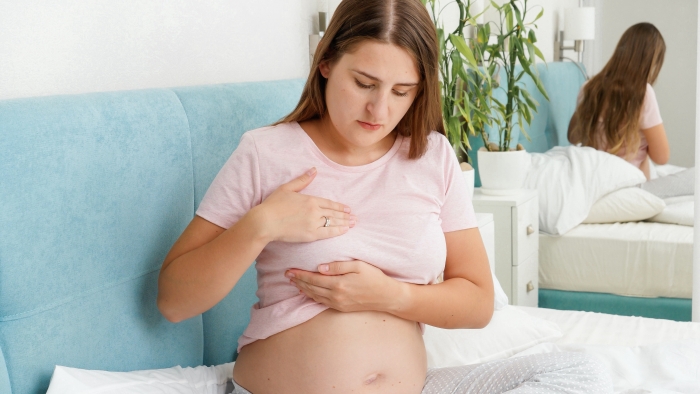
What Is Thrush?
Thrush is a fungal infection common in breastfeeding moms. Breastfeeding is a risk factor for thrush because thrush grows best in warm, moist environments. Thrush can also develop in the mouth, underarms, and groin.
Causes of breast and nipple thrush
Nipple thrush is caused by an overgrowth of fungus called candida albicans. This fungus is normally found on the skin and in the digestive tract. The fungus can overgrow in a warm and moist environment.
A candida colonization is more likely if you are taking antibiotics for an infection. Antibiotics fight your infection, but kill good bacteria too. The good bacteria usually keep the candida in check.
Eating a diet high in sugar and dairy is commonly believed to make thrush worse.
Cracked, dry nipples are also risk factors for thrush. When your nipples are damaged, the yeast can get inside the skin and overgrow. Keeping the breasts clean and dry prevents this overgrowth.
Make sure you are always washing bras well and change your nursing pads frequently to avoid infections.
Symptoms of thrush
Thrush may cause intense nipple pain on both sides of the body. Lactating mothers with thrush usually complain that pain persists after breastfeeding.
Breast thrush is easily passed to your baby. If you suspect you have thrush, check your baby’s mouth for white patches. Your baby might also develop a diaper rash.
Home treatment for thrush
You may find that applying cold packs after breastfeeding helps with the pain. Over the counter medicines like acetaminophen can also ease discomfort.
If you get candida mastitis, make sure you are washing your bras, cloth diapers, and bedding in hot water. Add 1 cup of distilled vinegar to the rinse water for even better sterilization. Also be sure to change your breast pads frequently.
If you are pumping, make sure you thoroughly clean your breast pumps and let them air dry after each session. If you use artificial nipples on a bottle or nipple shields, yeast can stick to the rubber. Keep your baby safe by boiling rubber nipples between uses.
Medicines to treat thrush
The first choice of medicine to treat thrush is antifungal cream. If the antifungal cream doesn’t work, your doctor will prescribe an oral antibiotic.
If you have passed oral thrush to your baby, you will give them an oral gel or suspension. They may also need special diaper cream.
These medicines are usually prescribed for 7-14 days. The recommended pediatric dose passes all safety standards, and is safe to give to your baby.
Medications for thrush include:
- Oral nystatin suspension
- Nystatin topical ointment
- Oral fluconazole
- Oral ketoconazole
- Miconazole gel
Possible complications of untreated breast and nipple thrush
Thrush is dangerous because it is so easily spread. By the time you notice you have thrush, it is likely that your baby already has it too.
Thrush is usually only a serious problem for immunocompromised children. If you or your baby develops thrush, it is important to get treatment right away.
With treatment, you and your baby should be feeling back to normal within two to four weeks. Untreated thrush may cause damaged nipples and mouth sores. It may also force you to stop breastfeeding before you are ready.
Oropharyngeal yeast eradication can take 2 weeks with treatment and 8 weeks without. Without treatment, the infection could spread to your baby’s throat. This can cause dangerous problems.
How to Tell Whether You Have Thrush or Mastitis
Mastitis and thrush both cause nipple pain, but you can tell the difference between the two. Signs and symptoms differ in a few ways.
| Thrush | Mastitis |
| Symptoms on both sides | Symptoms only on one side |
| Pain is worse between feeding sessions | Pain is worse during milk letdown |
| No flu-like symptoms | May develop flu-like symptoms |
| Flaky, cracked, or blistered nipples | Yellowish discharge from nipple |
Is It Possible to Have Thrush and Mastitis at the Same Time?
It is possible for lactating mother’s mastitis to lead to thrush. If the mastitis includes an infection, you’ll need antibiotics. Taking antibiotics puts you at risk for thrush.
Thrush might also lead to mastitis. Since thrush makes breastfeeding painful, you may not completely empty your breasts. The pain may force you to stop your session early. This might lead to a plugged duct and mastitis.
While it is uncommon, it is possible to have thrush and mastitis at the same time.
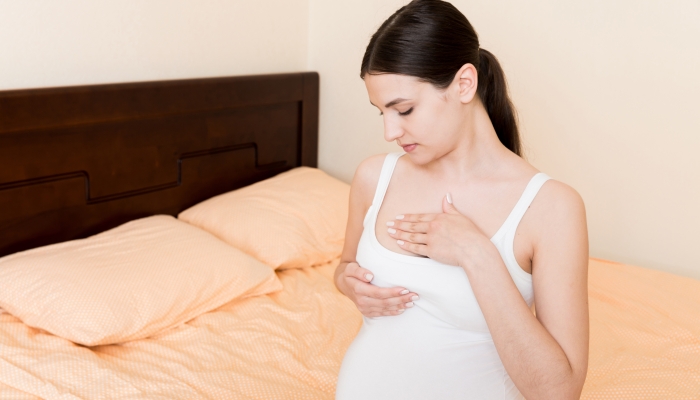
Should You Stop Breastfeeding if You Have Thrush or Mastitis?
You do not need to stop breastfeeding if you have thrush or mastitis.
If you have thrush, you will need antifungal medication for yourself and your baby. Since you will both be treated at the same time, you can continue to breastfeed.
Mastitis cannot be passed to your baby. In fact, breastfeeding more frequently is one of the best treatments for mastitis.
Helpful Tips to Prevent Breast Infections While Breastfeeding.
Breastfeeding infections are common, but preventable. Prevention is significantly superior to treatment. Simple steps for treating yeast infection and mastitis include:
- Breastfeed regularly.
- Empty your breasts with each breastfeeding session.
- Change your breast pads frequently.
- Clean pump parts with hot, soapy water.
- Avoid tight-fitting clothing.
- Alternate which breast you offer first.
- Use different positions for breastfeeding.
- Make sure you position your baby’s mouth correctly on the breast.
- Drink plenty of fluids.
- Seek treatment for sore nipples or breast pain.
FAQs
How common is mastitis in breastfeeding mothers?
20% of women get at least one plugged duct while breastfeeding. About 3% of nursing mothers develop mastitis. Blocked milk ducts are more common in the first few weeks after delivery and during weaning.
How common is thrush in breastfeeding mothers?
Thrush is a common condition for all women. All humans grow the fungus candida albicans on their skin. About 75% of women will need medicine for vaginal thrush in their lifetime.
Nipple thrush occurs in about 4% of breastfeeding moms. Since thrush is spread from mom to baby, thrush also occurs in 4% of newborn babies. Babies usually develop thrush in their mouth and groin.
Can previously-treated thrush or mastitis recur?
Both mastitis and thrush can be treated and come back. Getting mastitis once makes you more likely to get it again. It is very common to get recurring yeast infections.
How will medications for mastitis and thrush affect my baby?
Many antibiotics are safe during breastfeeding. Some antibiotic medication will cross from you to your baby through breast milk. The small amount in your milk will not harm your baby. Many antibiotics are commonly used to treat infections in babies.
Anti fungal medication used to treat thrush is also safe for your baby. Medications used for children and infants are tested rigorously before FDA approval.
To be safe, make sure you let your healthcare provider know that you are breastfeeding. They can help you find a medication that is safe for you and your baby.
Is it safe to freeze milk I pumped while I have mastitis or thrush?
Your milk supply will not change because of mastitis or thrush. Some moms are able to pump enough to freeze milk for later.
If you have mastitis, you can continue your regular storage routine.
If you have thrush, it is not safe to store pumped milk for later. Thrush can live in frozen breastmilk and re-infect your baby later.
Feeding your baby breast milk while you are both being treated is fine. Once the infection clears up, any pumped milk from that time should be discarded.
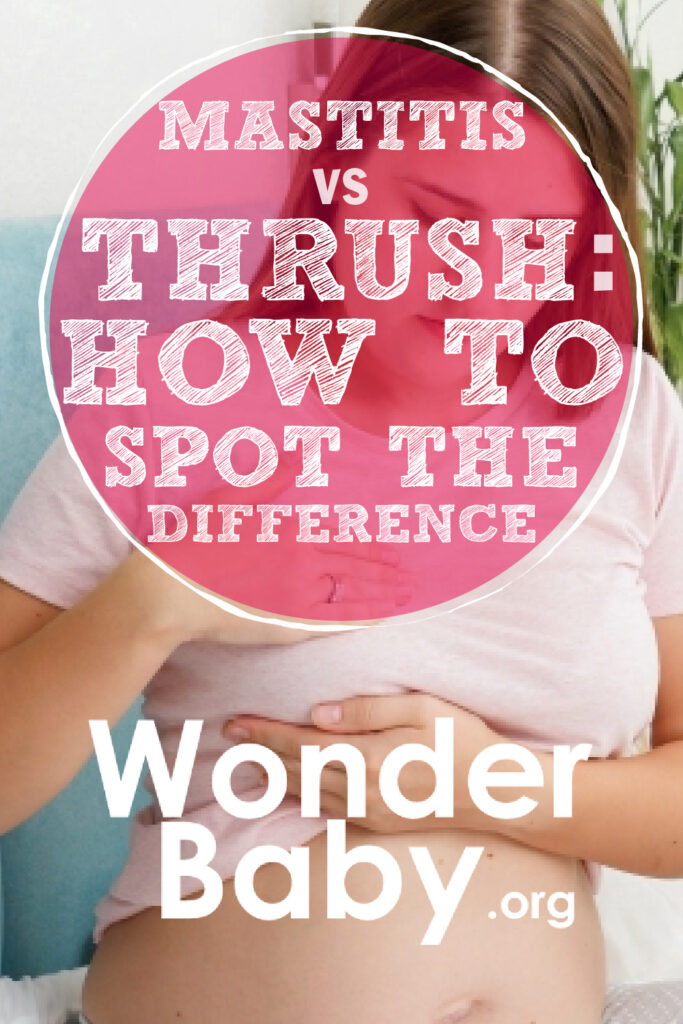
The information WonderBaby provides is not intended to be, and does not constitute, medical or other health advice or diagnosis and should not be used as such. Always consult with a qualified medical professional about your specific circumstances.
Related Posts

Breastfeeding, Sleep
Sleep and Breastfeeding: A Comprehensive Guide for Nursing Moms
Many people assume breastfeeding and sleep training don’t go together, but it is possible to help your baby sleep better while continuing your breastfeeding journey.
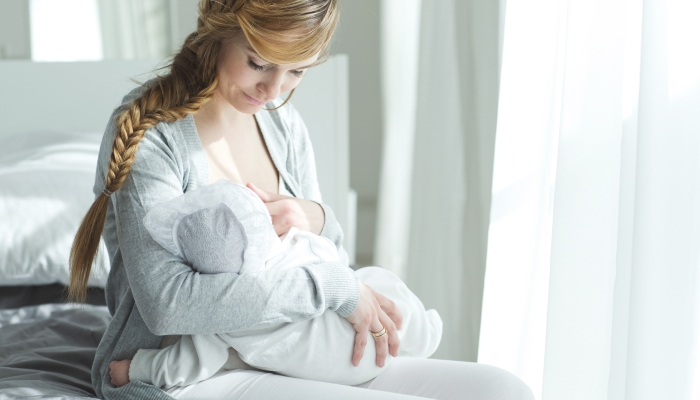
Breastfeeding
Comfort Nursing: Pros, Cons, and How to Stop
Find out what comfort nursing is, when should you worry about it, and how to stop or limit your baby's comfort nursing (especially at night!).

Breastfeeding, Product Reviews
5 Best Breastfeeding Chairs for Nursing Moms of 2023
Whether you want a gentle rock, a smooth glide, or a cozy cuddle to soothe your baby to sleep, you’ll have your pick of the best breastfeeding chairs on the...